Lenzites betulinus (L.) Fr. - Birch Mazegill
Phylum: Basidiomycota - Class: Agaricomycetes - Order: Polyporales - Family: Polyporaceae
Distribution - Taxonomic History - Etymology - Identification - Culinary Notes - Reference Sources
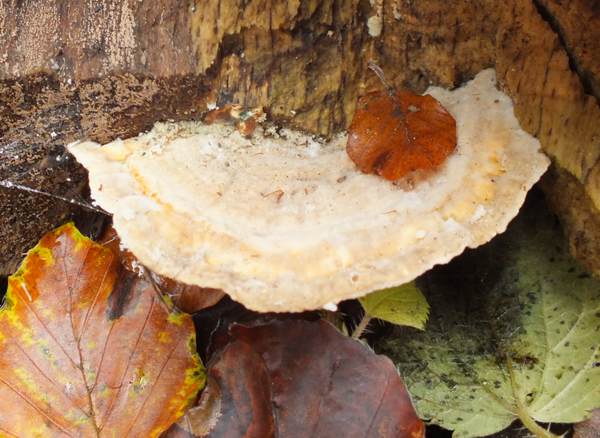
From the top this attractive bracket is easily misidentified. There are so many colour variations in Turkeytail Trametes versicolor and although often quite dark with bold zonation, sometimes you will come across examples with pale buff tops and only faint zones. Although less variable in colour than Trametes versicolor, the Birch Polypore has one very important feature distinguishing it from Turkeytail. Look underneath… the fertile surface has long gill-like pores whereas Turkeytail has very small roundish pores.
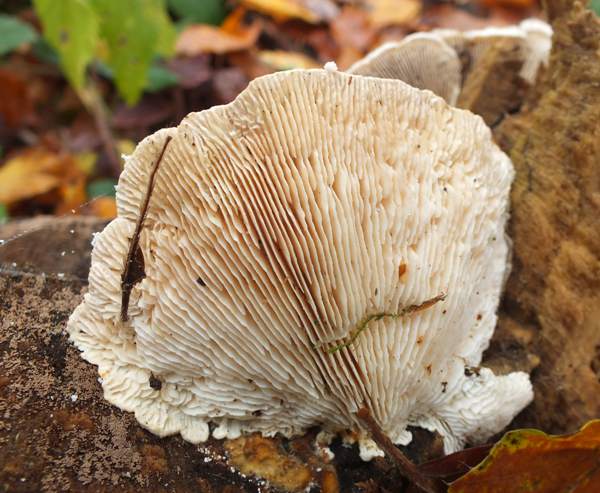
To spot the difference between Lenzites and Trametes, you have to look on the underside of a bracket. Lenzites betulinus has definite gill-like slots rather than pores. They aren’t merely very long mazegill slots either, but structures very similar to the gills of an agaric mushroom. The Birch Mazegill is, nevertheless, a polypore – taxonomically, that is!
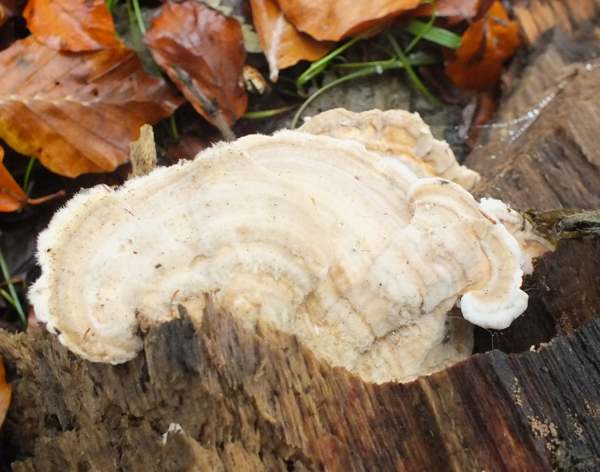
Distribution
An uncommon but conspicuous bracket fungus, the Birch Mazegill is found occasionally throughout Britain and Ireland.
Taxonomic history
In 1753, when Carl Linnaeus described this bracket fungus, he gave it the binomial scientific name Agaricus betulinus. The great Swedish mycologist Elias Magnus Fries transferred this species to the genus Lenzites in 1838, and Lenzites betulinus is still generally-accepted scientific name today.
Lenzites betulinus has several synonyms including Agaricus betulinus L., Agaricus flaccidus Bull., Daedalea variegata Fr., Apus coriaceus Gray, Daedalea betulina (L.) Fr., Lenzites flaccida (Bull.) Fr., and Lenzites variegata (Fr.) Fr.
Etymology
Lenzites, the genus name, was established in 1835 by Elias Magnus Fries, perhaps honouring German mycologist Harald Othmar Lenz (1798 - 1870). The specific epithet betulinus means 'of birch trees' - a reference to the genus of host trees upon which this bracket fungus is most commonly found.
Identification guide
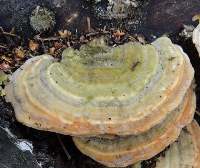 |
CapMany-zoned when mature, often pinkish fan-like brackets, up to 10 cm across and 1 to 2 cm thick at the point of attachment; usually in tiers. |
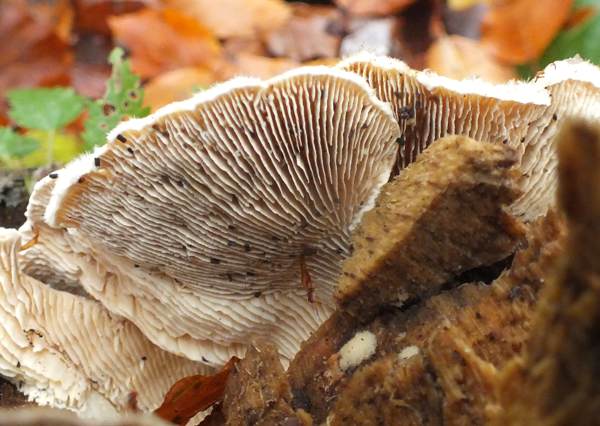 |
GillsThe gills are white at first, turning brown with age; well-spaced or fairly close; sharp-edged; tough; up to 1 cm deep. |
SporesCylindrical, smooth, 5-6 x 2-3µm; inamyloid. Spore printWhite. |
|
Odour/taste |
Not distinctive |
Habitat & Ecological role |
On living or dead hardwood trees, particularly birch. |
Season |
All through the year, but shedding spores in autumn. |
Similar species |
Trametes versicolor, Turkeytail, has pores rather than gills. |
Culinary Notes
The Birch Mazegill is tough and inedible.
Reference Sources
Fascinated by Fungi, 2nd Edition, Pat O'Reilly 2016, reprinted by Coch-y-bonddu Books in 2022.
Dictionary of the Fungi; Paul M. Kirk, Paul F. Cannon, David W. Minter and J. A. Stalpers; CABI, 2008
Taxonomic history and synonym information on these pages is drawn from many sources but in particular from the British Mycological Society's GB Checklist of Fungi.
Fascinated by Fungi. Back by popular demand, Pat O'Reilly's best-selling 450-page hardback book is available now. The latest second edition was republished with a sparkling new cover design in September 2022 by Coch-y-Bonddu Books. Full details and copies are available from the publisher's online bookshop...

